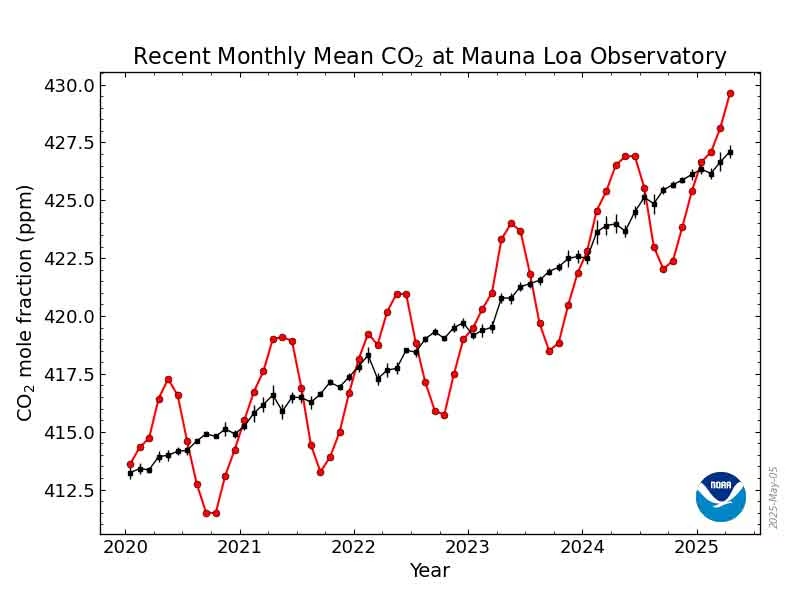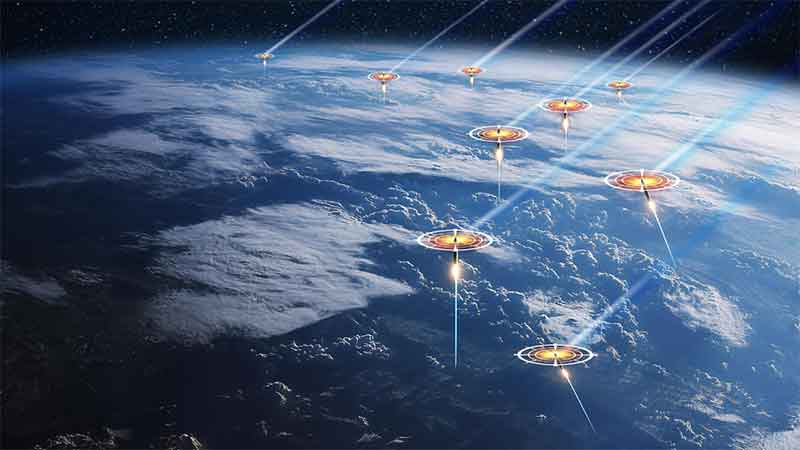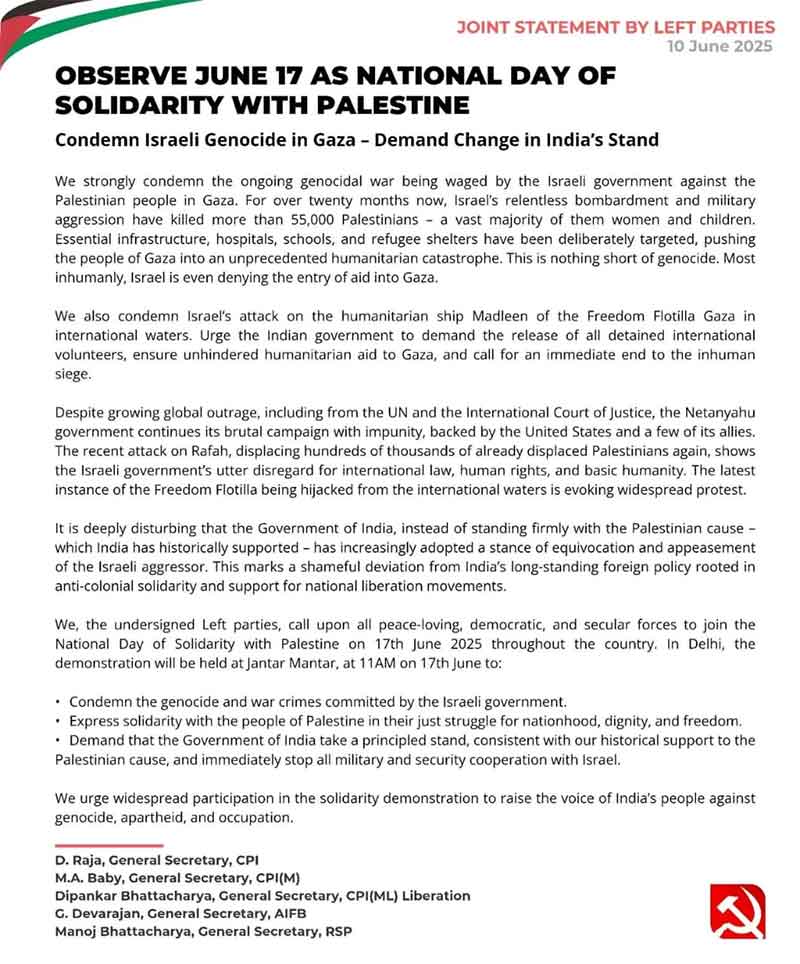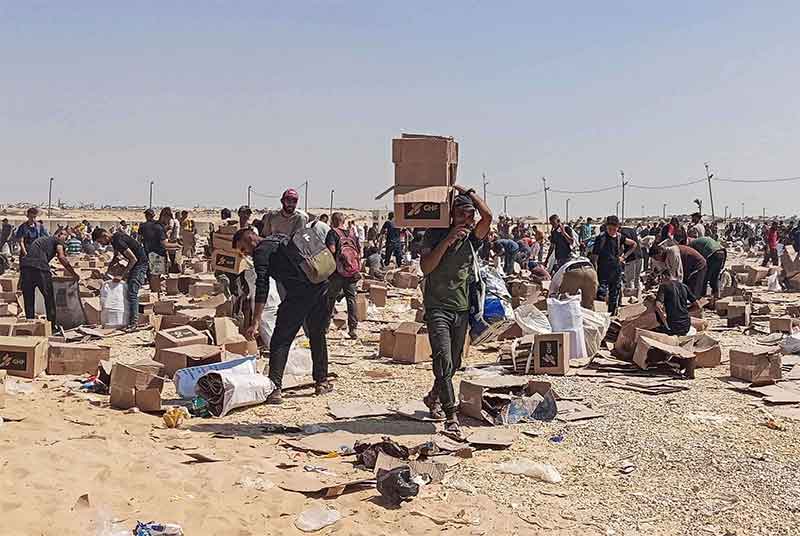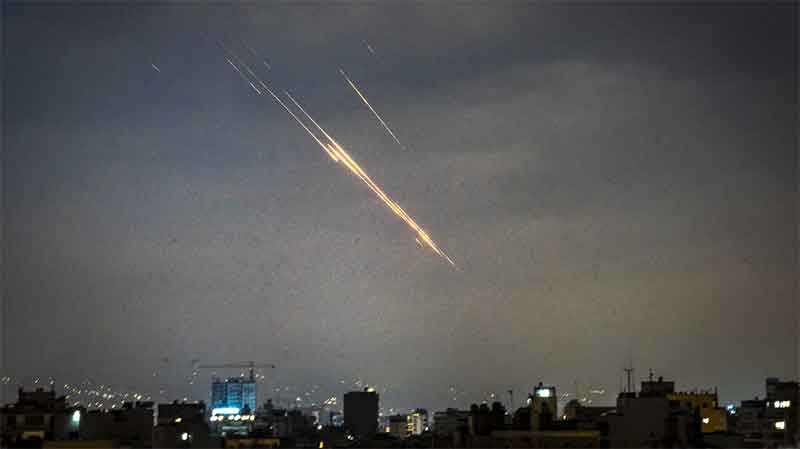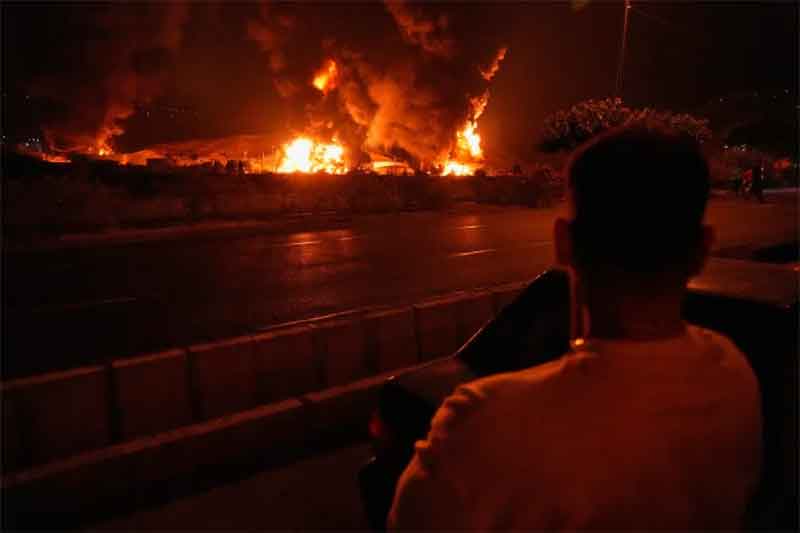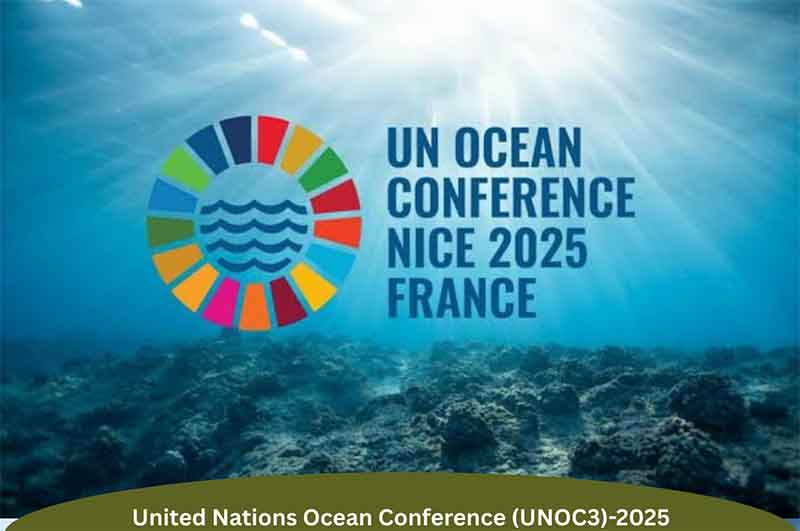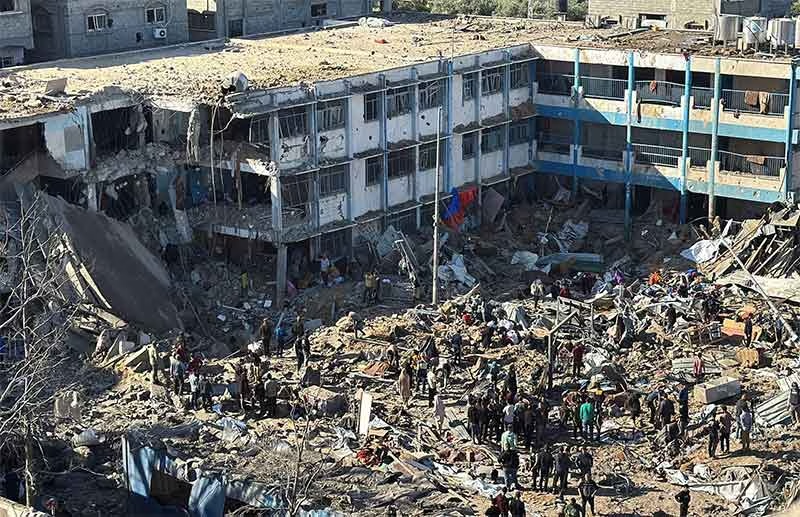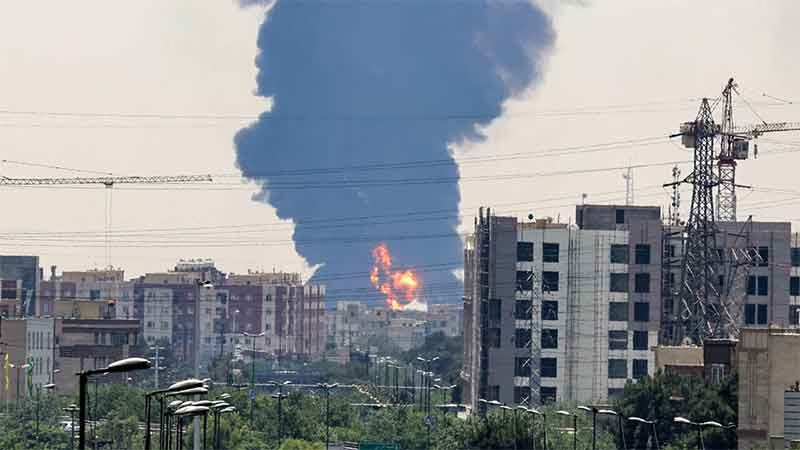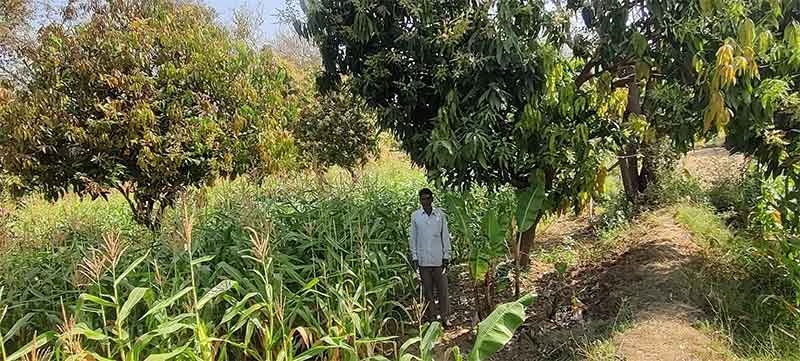
Mark McCrindle coined the term ‘Generation Beta’ to refer to those born on or after January 1, 2025. In every aspect of their life A.I and digital connectivity will play a pivotal role. They will bask in the pinnacle of technological advancement. Yet, their future stands overshadowed by looming crises : climate change and accelerating biodiversity loss and if we follow the current path, we risk handing them a burning knife and hoping that they will be able to navigate through it. This essay will explore the causes and impact of climate change on both humans and biodiversity ,how it will adversely affect the future generations and argue that instead of a burning knife we can hand them a baton of sustainable development which they’ll be able to carry forward to create a more resilient and balanced future.
So, what causes climate change? The answer is clear: greenhouse gas emissions! According to the World Resources Institute, energy sector is the biggest contributor to energy production, accounting for 75.7% of the total greenhouse gas emissions, this includes electricity, heat production , transportation, manufacturing, construction and buildings. In India approximately 32% of the country’s emissions come from the power sector of this 95% originated from coal-fired power plants. Even after 29 editions of the Conference of Parties aimed at curbing the emissions, we have yet to see a decrease in the annual carbon emission. In 2023, global emissions stood at 37 billion tonnes, climbing to a record 41.6 billion tonnes in 2024. But what are greenhouse gases. These are gases like carbon dioxide, methane, nitrous oxides and fluorinated gases which when released retains heat in the atmosphere similar to a greenhouse, as their concentration in the atmosphere increases so will the amount of heat retained, leading to a global warming which will unequivocally lead to climate change. Climate change creates a web of interconnected crisis and of this the most important one might be biodiversity loss. The cause of biodiversity loss is numerous : habitat destruction, pollution, over exploitation, invasive species, loss of genetic diversity. However, the inextricable link between climate change and biodiversity loss has been well established. Climate change drives
habitat alteration, increases the frequency of extreme weather events, disrupts ecological relationships, and creates positive feedback loops that exacerbate the problem further.
The repercussions of climate change are manifold and often interconnected, affecting various aspects of our environment, health, and economy. One of the most significant impacts is the rise in global temperatures, which in turn leads to more extreme weather events, biodiversity loss, and severe health and economic consequences. Climate change disrupts large-scale weather systems, further amplifying its effects. For example, the Atlantic Meridional Overturning Circulation (AMOC), which plays a crucial role in regulating global climate by transporting warm water from the tropics to the North Atlantic, is becoming increasingly vulnerable. Melting ice sheets in Greenland and the Arctic lower the salinity of the ocean, reducing the density of the water and slowing down the AMOC. This disruption can trigger stronger hurricanes in the North Atlantic, colder winters in Europe, and more intense heatwaves across North America and Europe. Similarly, the El Niño-Southern Oscillation (ENSO), which refers to the periodic warming of ocean water in the central and eastern Pacific, is becoming more intense due to climate change. This shift results in severe weather patterns such as prolonged droughts in Australia and Southeast Asia, devastating flooding in South America, and stronger cyclones in the Pacific. Conversely, the cooling phase of ENSO, known as La Niña, brings its own set of challenges. It can cause excessive rainfall in Southeast Asia and Australia, while also leading to drought-like conditions in western South America and parts of Africa. The far-reaching consequences of such extreme weather events are highlighted in a report by the Centre for Science and Environment, which paints a grim picture of India’s climate future. From January to September, 93% of India’s weather events were categorized as extreme, including heatwaves, coldwaves, cyclones, landslides, heavy rains, floods, and lightning. These events led to the tragic loss of 3,238 lives, the deaths of 9,457 livestock, and the destruction of 3.8 million hectares of agricultural land.
Climate change also exacerbates the disparity between the poor and the rich. According to Concern USA, an NGO focused on humanitarian issues, an estimated 30 million people are displaced annually as a result of climate- related disasters. Another pressing aspect of climate change is the increasing
incidence of zoonotic disease outbreaks. As temperatures rise and habitats are destroyed, wild animals are forced to migrate closer to human settlements, increasing the likelihood of disease transmission. For instance, the 2014-2016 West Africa Ebola outbreak, which claimed 11,325 lives, is thought to have originated from a bat-human interaction in a deforested area in Guinea. Additionally, climate change facilitates the expansion of vector- borne diseases, alters pathogen survival rates, and heightens the risk of outbreaks. One of the scariest outcomes may be the release of ancient pathogens trapped in permafrost, which is thawing due to rising global temperatures. In Siberia, for example, thawing permafrost released anthrax spores, causing an outbreak in 2016. These interconnected crises not only threaten ecosystem but also disrupt human societies highlighting the dire consequence of climate inaction. As these challenges mount, it becomes evident that climate change is a war we have waged and are now fighting on all fronts, with human lives, ecosystems, and livelihoods at stake.
As much as climate change affects humans, its impact on biodiversity is far worse. Since the Industrial Revolution, the rate of species extinction, often referred to as ‘Racing Extinction,’ has accelerated significantly. Current scientific estimates indicate that the extinction rate is now 1,000 to 10,000 times higher than the natural background rate of 1 to 5 species per year. The Yangtze River dolphin, Spix’s macaw, the Western black rhinoceros, Perlman’s catchfly, and Acalypha wilder are just a few of the species that have been declared extinct by the IUCN. The primary causes of this are habitat destruction, climate change, and human activities. Around 10 million hectares of forest are destroyed every year, with 96% of this deforestation occurring in the highly biodiverse tropical rainforests. As the world moves toward a resource-intensive culture, more forests are cleared for monocultures, farming, and logging. The worst affected are the most biodiverse forests, such as the Amazon rainforest, the Congo Basin, and the rainforests of Borneo and Sumatra. These forests together house 30-35% of the world’s species diversity, and the destruction of these fragile ecosystems is alarming. If you think only forests are affected, you couldn’t be more wrong. The condition of our oceans is no better.
While the Amazon rainforest is often referred to as the ‘Lungs of the Earth,’ it is important to note that 50-70% of the oxygen produced on Earth is generated by organisms in the ocean, compared to just 6% by the Amazon.
Additionally, the ocean absorbs 30% of the carbon dioxide produced by human activities, acting as a crucial buffer against climate change. As the ocean absorbs more carbon dioxide, its pH decreases, leading to ocean acidification. Simultaneously, the ocean absorbs 90% of the excess heat generated by greenhouse gas emissions, causing significant warming. Ocean warming leads to coral bleaching, disrupts species migration as many marine organisms are temperature-sensitive, and results in habitat loss. Additionally, warming decreases oxygen levels, creating hypoxic “dead zones” where life struggles to survive, and intensifies storms and currents. Ocean acidification disrupts food webs by weakening shell-building organisms like plankton and shellfish, causes physiological stress in marine species, and accelerates coral reef degradation. Coral reefs are home to almost 25% of marine species, making their degradation one of the worst effects of climate change. We must keep in mind that less than 25% of the ocean floor has been mapped, and the fact that we’ve mapped the surfaces of the Moon and Mars with greater precision than our oceans highlight how difficult it is to understand them. Only a fraction of marine biodiversity has been cataloged, and this has alarming consequences. Species like Steller’s sea cow and the Caribbean monk seal are high-profile examples of marine extinction, but countless smaller species plankton, deep-sea fish, or invertebrates may disappear without detection. This means we could be facing an invisible biodiversity crisis that may have cascading effects on ecosystems. The vast amounts of waste dumped into the ocean only exacerbate these challenges, creating a perfect storm of destruction for both the ocean and biodiversity
It would be inaccurate to claim that no action has been taken while climate change progresses. The formation of the Intergovernmental Panel on Climate Change (IPCC) in 1988 by the UN and the World Meteorological Organization was a pivotal moment in raising awareness about human impact on climate change. Over the years, numerous global agreements and meetings have been held, with COP29 in Baku, Azerbaijan in 2024 being the most recent. The key objective of this meeting was to limit global warming to 1.5°C above pre-industrial levels but with regard to the current trend , achieving this target is extremely challenging, yet there is hope or there must be some hope as inaction would only worsen the situation. One of the best things we can do is push towards sustainable development. The term “sustainable development,” first coined by the Brundtland Commission
in 1987, is defined as “development that meets the needs of the present without compromising the ability of future generations to meet their own needs.” However, the extent to which true sustainable development has been achieved is highly uneven, and this disparity must change. Some countries have made significant strides in this regard. For instance, Denmark and Germany rely heavily on renewable sources for their energy needs. Similarly, Costa Rica produces 99% of its energy from renewable sources and has preserved vast areas of biodiversity, while Bhutan remains carbon- negative. On the other hand, major greenhouse gas emitters like the USA, China, and India still lag in fulfilling their promises to curb emissions. With growing public awareness, technological advancements, and policy shifts, there is reason to believe that meaningful progress may soon be achieved.
So, let’s look at some positive trends that is happening all around the world. Major economies like India, China and the European Union have agreed to net-zero before 2070. What is net-zero? It means that the amount of carbon emissions added to the atmosphere is balanced by the amount removed. Many countries, including the UK, Germany, and South Korea, have decided to phase out coal-fired power plants. The shift from fossil fuels to electric vehicles is another encouraging trend. In the future, advancements in battery recycling and the development of more efficient battery technologies could make this transition even more sustainable. Additionally, the advent of Carbon Capture and Storage (CCS) technology, exemplified by Climeworks in Switzerland and Carbon Engineering in Canada, holds great promise for reducing atmospheric carbon. Several personalities and organizations are tirelessly working toward this cause. Boyan Slat’s Ocean Cleanup initiative aims to remove 90% of floating plastic by 2040. Influential figures like Sir David Attenborough, Sylvia Earle, and Jane Goodall advocate for renewable energy, marine conservation, and sustainable practices. E.O. Wilson’s Half-Earth Project proposes preserving half the planet for biodiversity, while Tony Rinaudo (the “Forest Maker”) and Wangari Maathai’s Green Belt Movement focus on reforestation and environmental restoration. Organizations such as Mission Blue, Rainforest Alliance, Conservation International, Carbon180, and Project Drawdown play a pivotal role in this global movement. Meanwhile, SolarAid, Rewilding Europe, and the International Union for Conservation of Nature (IUCN) continue to drive impactful change for a more sustainable future
The 1.5°C threshold is widely regarded as a tipping point, a critical point beyond which the effects of climate change could become catastrophic and irreversible. At this juncture, even small changes can lead to disproportionately large impacts, underscoring the urgency of the actions we take today. The future of coming generations rests in our hands, just as the future of our own generation was shaped by those before us. We cannot afford to repeat the mistakes of the past. The positive changes we implement now will serve as a foundation for future generations, better equipping them to continue the fight with greater efficacy. As Robert Swan wisely stated, “The greatest threat to our planet is the belief that someone else will save it.” It is up to us, today, to act with conviction, for the consequences of inaction are too great to ignore.
Midhun P is a 3rd year BSc Zoology student of Fathima Matha National College, Kollam. Email: [email protected]
This essay won the first prize in the T Shahul Hameed Environmental Essay Competition on the theme ‘Climate Change and Biodiversity Crisis: What does the Future Hold?’ The state wide essay competition was conducted by the Zoology Dept of Fathima Matha National College.


